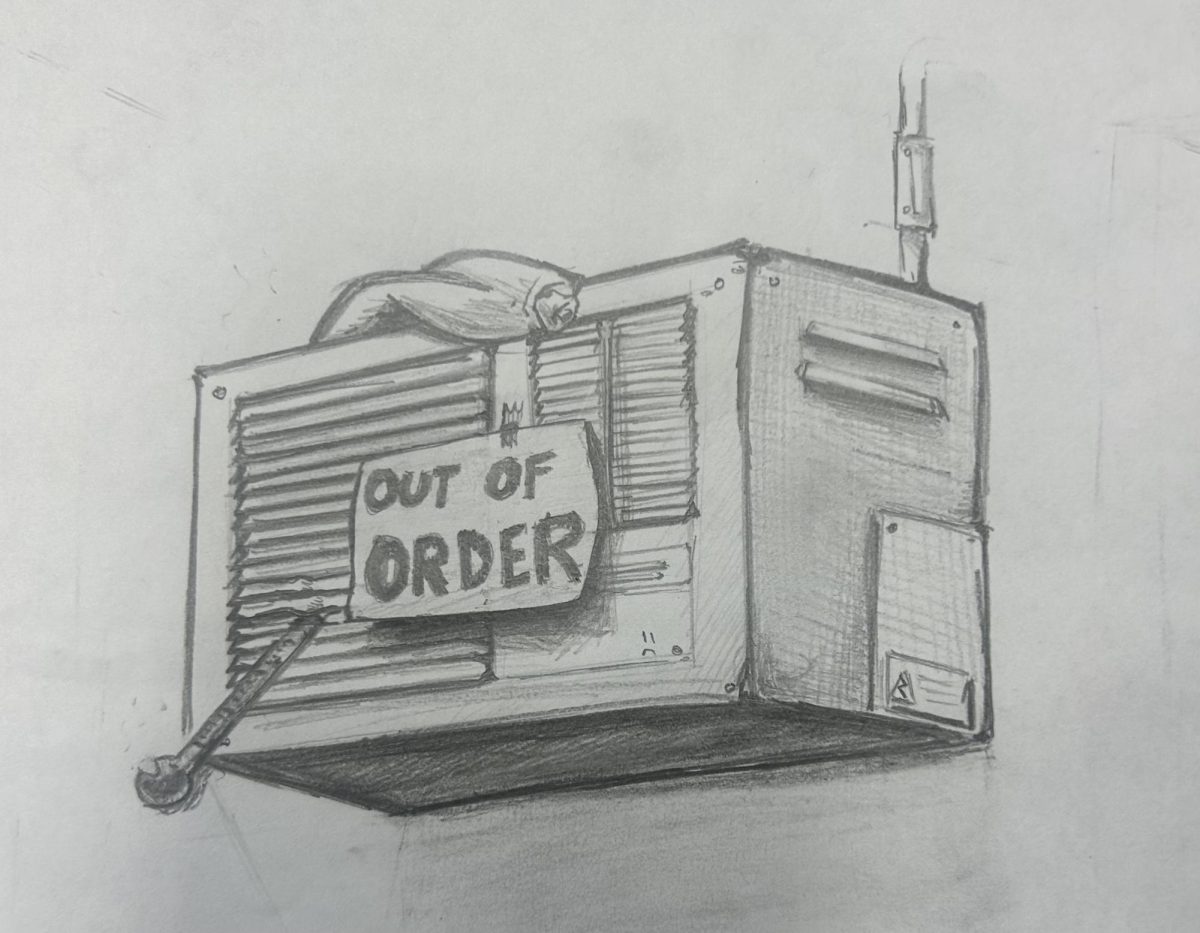
Art by Jordan Yip
LAUSD is facing a problem, and it is a hot one. Many schools across the district have faulty or broken air conditioners. According to KQED, there are over 50,000 faulty or aging air conditioning units in over 1,000 schools in Los Angeles. Yet temperatures during the summer heat waves can reach around 100 degrees.
These temperatures are uncomfortable, and more importantly, unsafe. Estimates from CalMatters say that replacing all of the broken air conditioning units across the District would cost around 9 billion dollars, meaning each air conditioner would cost around 180 thousand dollars.
The District has implemented temporary measures to lessen the impact of the heat waves. Portable ACs, misting fans and shade tents have been placed in schools as temporary measures. Although these measures are helpful and make things more comfortable, they are only temporary, and may not be able to work long term.
LACES is no exception to these widespread issues. Many of the air conditioners at this school are old, but most classrooms at LACES have semi functioning air conditioning. Other classrooms are not so lucky, including the gym. There is also no air conditioning in the hallways. While the heat in some classrooms may be manageable, the gym heat is not.
During heat waves, all of the PE classes relocate to the gym. With the AC in the gym kaput, the risk for both heat stroke and heat exhaustion is higher.
Symptoms of heat exhaustion include cool moist skin with goose bumps in the heat, heavy sweating, faintness, dizziness, fatigue, weak rapid pulse, muscle cramps, nausea and headaches.
“It is concerning for students to be [in the gym] with the heat and risk fainting,” said school nurse Melanie Parker.
She suggests preparing for the heat with sunscreen and bringing a water bottle, because many students do not.
“Bring your water bottle filled up because almost every student doesn’t, so just hydration, conserving energy, and wearing sunscreen [will help prevent heat exhaustion],” said Parker.
No students have been seriously affected by the gym heat specifically. According to Parker, all students who have had heat exhaustion were outside at the time.
Even though the heat waves are beginning to fade, the heat is still a problem. Following Parker’s advice, staying hydrated and taking water breaks are important. Make sure to bring a water bottle to school, wear your sunscreen and stay safe.